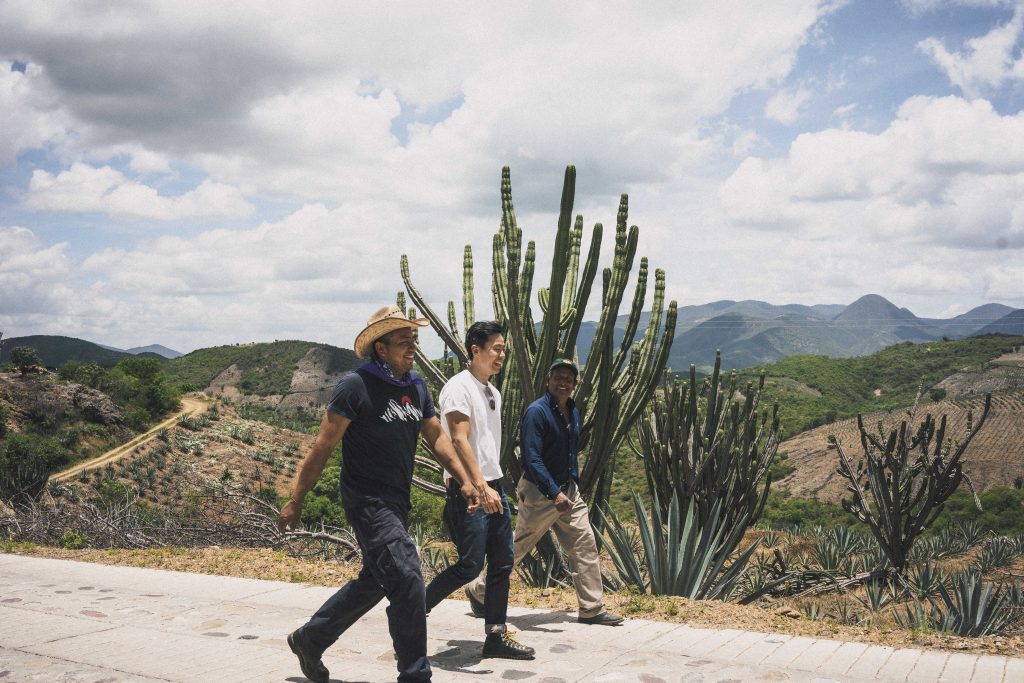Bristol Studio’s Sophisticated Combination of Basketball, Japanese Design and Nostalgia
We speak with co-founders Luke Tadashi and MAASAI Ephriam about childhood memories, style and meditation

Founded by Luke Tadashi, with MAASAI Ephriam, Jake Fenster and Rashaad Dixon, LA-based studio and lifestyle brand Bristol Studio appeared on the scene in 2015 and hasn’t showed signs of slowing. Inspired by basketball but imbued with Japanese design and drenched in nostalgia, Bristol Studio garments are conceptual but practical, contemporary but classic. There’s a certain charm and authenticity to each design, as they are inspired by childhood and adolescent memories playing basketball. Thanks to all these elements combined, the brand is carving out a niche space that blurs basketball and sophisticated but laidback style. We recently spoke with co-founders Tadashi and Ephriam about Bristol Studio’s culture mash-up and future plans.

I know a lot more about Japanese design and culture than I do about basketball and love how you bring the two together. Did you always see a connection between these aesthetics or were they separate things you sought to bring together?
Luke Tadashi: I don’t believe there’s an obvious connection between Japanese design and culture, and basketball. But growing up half-Japanese in Los Angeles and loving the game of basketball—those two distinct worlds collided within me. From a young age, my family would take trips to Japan to visit relatives and expose my brother and me to a different culture than the American one back home. My mom always had a discerning eye for design and she definitely passed that down to me. I remember her doing things like putting a camera in my hands at a young age and encouraging me to document our trips to Tokyo through my own eyes. She was a big admirer of many of the Japanese avant-garde designers like Yohji, Rei Kawakubo and Issey Miyake. I think she appreciated the attention to detail, thoughtfulness and unique design language that stood in stark contrast to the design we celebrate in America. There’s something raw, organic and deconstructed in the DNA of my Japanese designers, which immediately stands apart from what we typically hold up as “beautiful” or “good design” in the West.

My passion as a kid and through high school, even into college, was basketball. I loved the game with all my heart, but beyond the game I was obsessed with the culture that surrounded basketball. I paid especially close attention to how my favorite players dressed and carried themselves, and the connection between their expressions off the court and their artistry on the court. Kobe was probably the biggest inspiration for me—just growing up in LA in the early to mid 2000s, he was basketball in the city. My mom always liked to remind me that he’s named after the Japanese city, Kobe—so there’s a connection between basketball and Japan.
The game is poetry in motion to me, a dance. Equal parts grace and physicality. As much art as it is sport.
But as I got into my early 20s and my relationship to the game changed, I was no longer playing competitively. I started thinking about expressing my love for basketball through my own story, being a half-Japanese kid that always saw the game of basketball as more than a sport. The game is poetry in motion to me, a dance. Equal parts grace and physicality. As much art as it is sport. And so the idea for Bristol Studio was born.
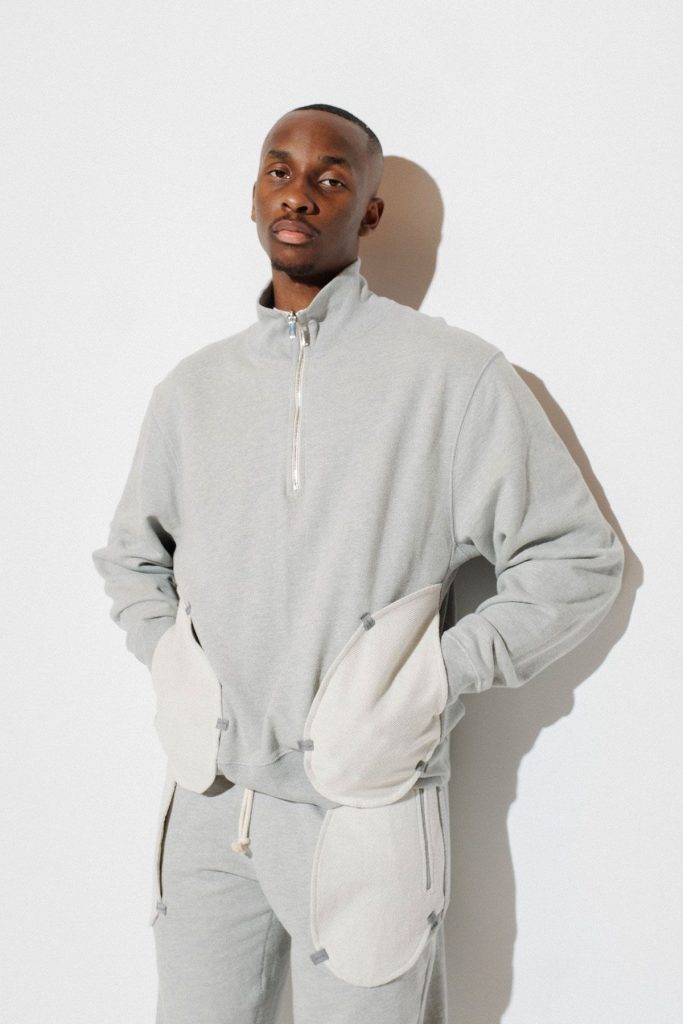
Style and function don’t always work well together. How do you approach the design process to make sure Bristol Studio apparel achieves both?
LT: My approach to design has always been storytelling first. Almost every piece I design, I try to tell a story. In its highest form, this would be the reversible sweatsuit. It’s born from a personal story, but I elevated it through conscious choices that elicit elements of Japanese design (to me). Most notably, the contrasting pockets that juxtapose the smooth face of the Terry cloth with the raw/loop backside of the fabric. But the idea came to me because I knew I wanted to make a reversible sweatsuit. You see, as kids my friends and I would always wear our clothes inside-out, especially after practice. It almost just happened subconsciously, but it became an intentional look.
Another piece is our Triple Hem Shorts. This idea came to be because you see layering a lot in basketball attire. For example, people wear multiple socks layered on top of each other or we used to wear basketball shorts under denim. There was this layering story that I always picked up on. So I created a pair of basketball shorts that speak to this. At the same time, there’s almost something raw and unexpected about them, which ties back into the Japanese design ethos for me.
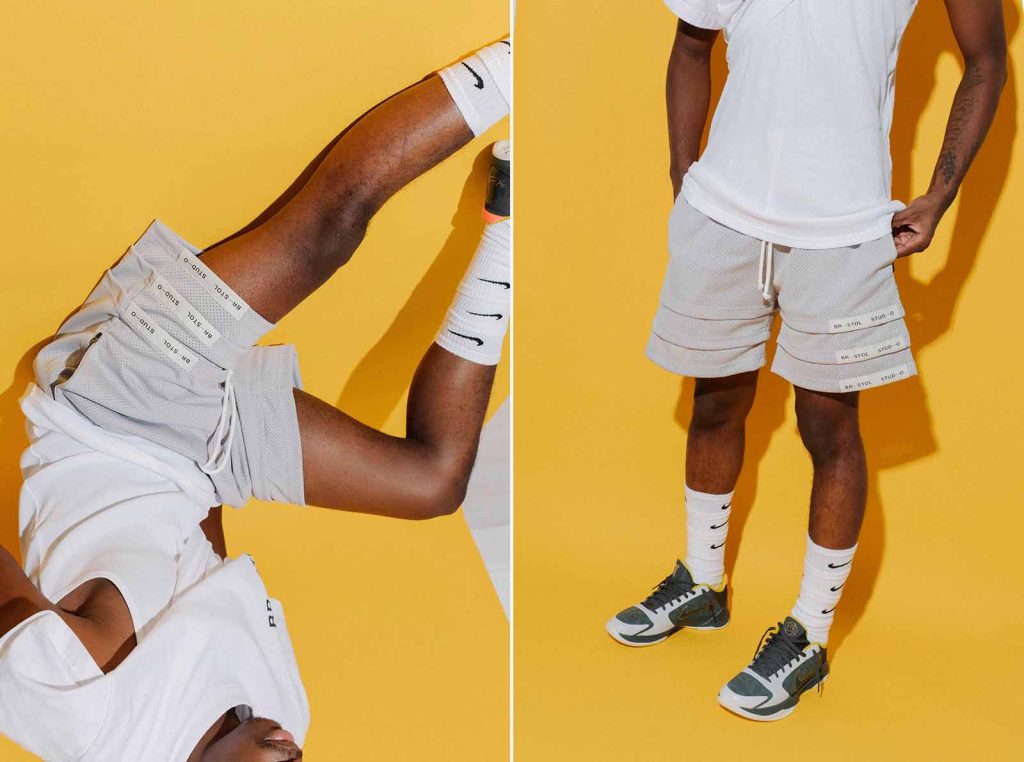
Reversibles and layers are a look born from necessity and that look would tell a story about you to people who recognize it. I like the look but I don’t play basketball. Am I a poser if I wear Bristol?
LT: Not at all. Our brand is design-forward. Meaning, I want you to wear our clothes because you appreciate the originality and unique design language we’ve created. Of course, our clothes will always resonate deeply with a basketball fan or someone who loves playing the game, but by no means do you have to play basketball to wear our clothes.
I’d also like to say that our brand is inspired by the values innate to basketball: community, teamwork, self-expression, inclusivity, sport as a bridge to form new relationships, etc. On the court, anybody can play—it’s a great equalizer. Your socioeconomic background, your titles in the world, none of it matters when you step on that court. It’s just about: can you find a way to mesh with the other four people on your team and help the group achieve the goal of winning and growing? So for us, if you buy into that vision of the world, those values, we don’t care if you’ve never touched a basketball in your life. We want you to represent our brand.
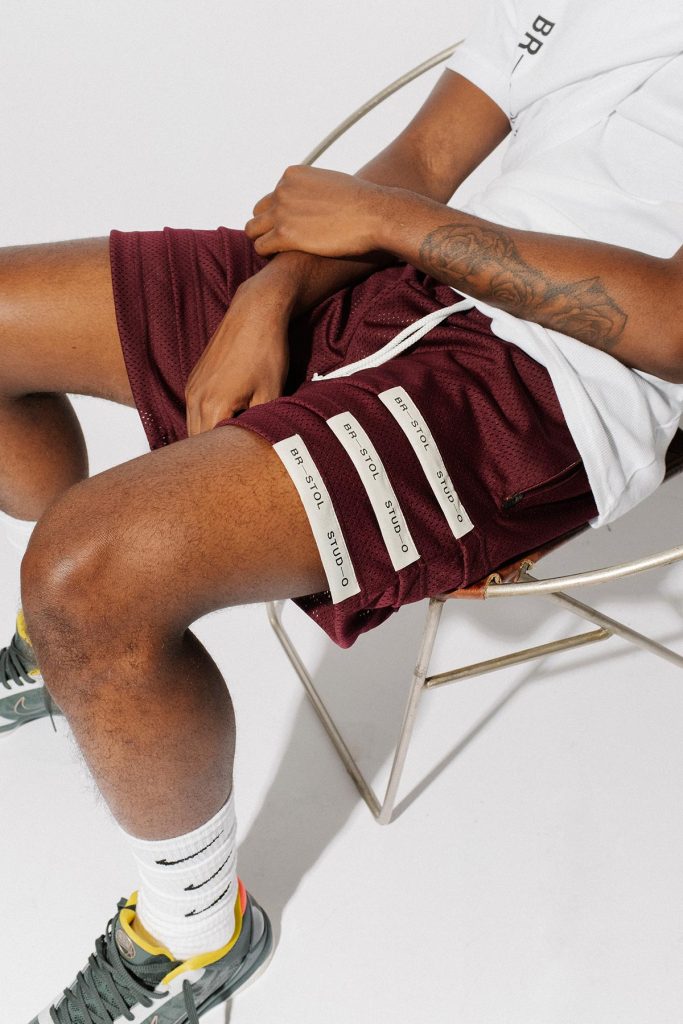
Where does the name Bristol Studio come from and what does it mean to you? Is there meaning to the “I” laying on its side in your logo?
LT: Bristol Studio came from the street I grew up on in Los Angeles. My parents’ home was sort of this communal place, this melting pot of sorts. My parents had a really beautiful open-door policy where anybody could drop by at anytime. (It even got to the point where it annoyed my brother and I because our friends would just show up all the time unannounced, but there was something beautiful about that. Everyone knew they were always welcome.) I think it mirrored in many ways what the game of basketball can do in bringing so many different people together, that’s what our home was like.
The “I” lays flat because our logo is mainly used in a vertical format. Again, this ties into Japanese culture, but I grew up with my granny in the house and she would always be reading her Japanese books. Japanese writing, as many people know, is read vertically, top down (right to left). I like that when our logo is shown vertically with the flat Is, they actually become clearly visible as Is look in English. It’s only when the logo is read horizontally (how we read in America) that it’s kind of confusing, like why are the Is dashes? So to answer this question, this was another way I tied in Japanese culture and a piece of my story into the brand.
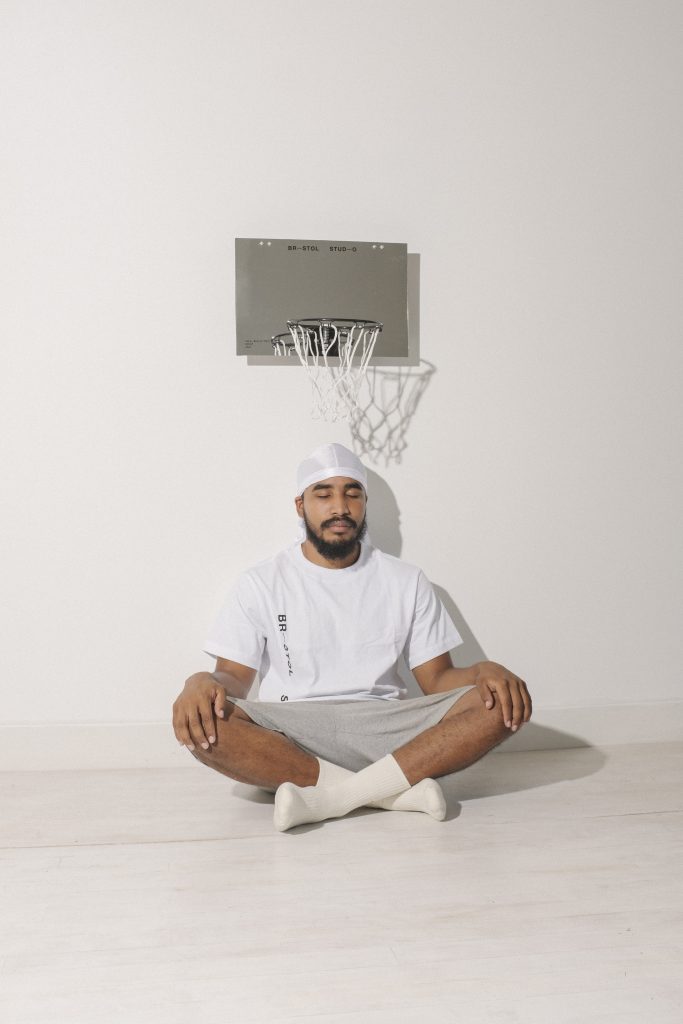
How did you find your way to mindfulness and meditation? Tell us about the realization that you could hold space for others and guide meditations through your program, The Practice.
MAASAI Ephriam: The sport of basketball is actually what piqued my curiosity in mindfulness. I always knew basketball was as much a mental game as it was a physical one. But it was only in the last few years that this idea really crystallized itself for me. When COVID first hit, Luke was actually reading a memoir by Phil Jackson called Sacred Hoops. When he finished, he passed it along to me. In reading Sacred Hoops, the connection that I always intuited between sports and mindfulness was finally articulated. It was like Phil was putting all my beliefs and thoughts about sport and life into words I never quite could, even though I knew it was true.
In Phil’s words: “Basketball is an expression of life, a single, sometimes glittering thread, that reflects the whole. Like life, basketball is messy and unpredictable. It has its way with you, no matter how hard you try to control it. The trick is to experience each moment with a clear mind and open heart. When you do that, the game—and life—will take care of itself.”
As the reality of COVID-19 began to set in for all of us, I took Phil’s words to heart and dedicated myself to the daily practice of meditation. We use Bristol Studio as a vessel to share our experiences and lessons with the world—once I started to experience the benefits of my own mindfulness practice, I knew that if we could incorporate mindfulness into the brand we’d have a real opportunity to impact the masses in a positive way. Thus, The Practice was born. Currently, The Practice consists of three introductory-level guided meditations and in the future we plan to build it out through an app that offers guided meditations, mindfulness lessons and conversations exploring the intersection of sports and mindfulness.
Images courtesy of Bristol Studio
